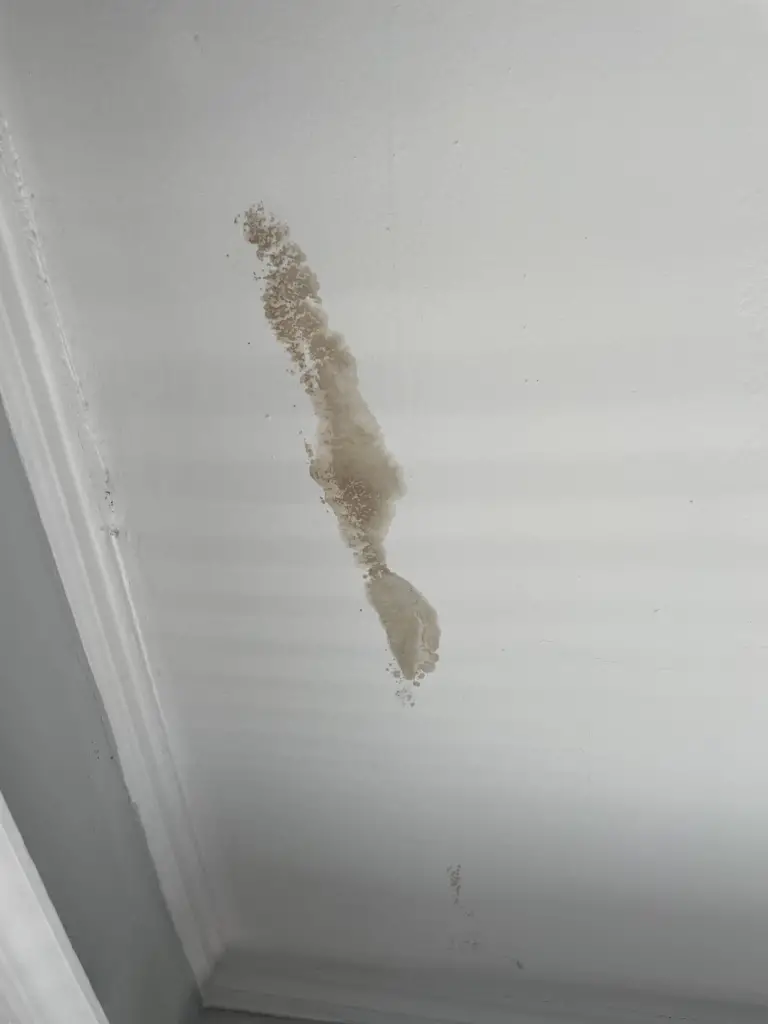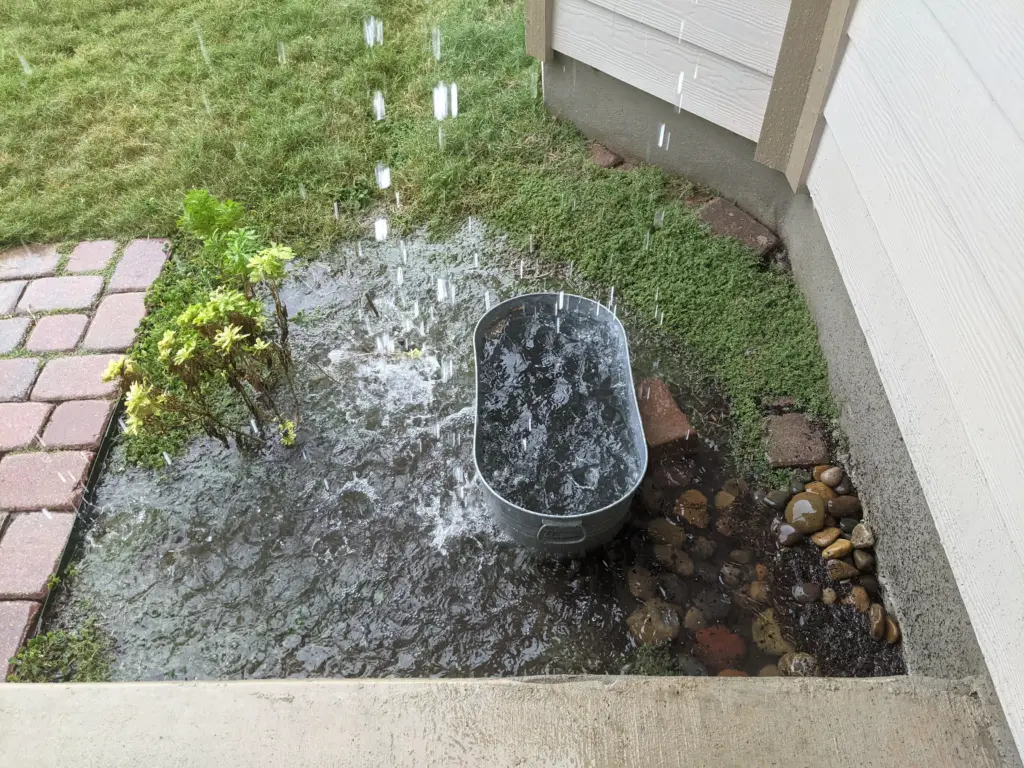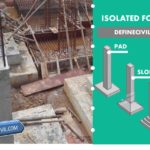The roof of a structure is its first line of defense against the elements, shielding it from rain, snow, and various environmental factors. However, over time, roofs can become susceptible to water damage due to factors like weathering, age, or severe storms.
Roof water damage poses a serious threat to the structural integrity of buildings, leading to a range of issues such as leaks, compromised insulation, and even structural failures.
This article explores the importance of preventing and addressing roof water damage, outlining key strategies for repair and maintenance to safeguard the longevity and stability of a building.

Signs of Roof water Damage
An insurance claim for water damage will cost a homeowner on average more than $10,000. That’s why it’s absolutely necessary to detect water damage early before it becomes a major problem with many repairs.
When you can spot the signs of roof water damage quickly, you’ll be able to get the professional help you need.
Keep reading for the top ways to see water damage in your home.
WATER SPOTS
One of the most obvious signs of water damage is visible water spots. That likely means that there is water on the ceiling, either from the roof or pipes in the ceiling.
Water spots can look a little differently depending on the type of leak.
But more often than not, they are a discolored (usually brown) circular stain on the drywall. It can have a variety of colors depending on if areas have dried or not.
The water spot can also be on both ceiling and the wall if the leak has expanded that far. If you see a water spot it’s a very clear indication of some type of water damage with very few other explanations. You need to call a professional immediately.

INDOOR PUDDLES
Another very obvious sign that you’re going to need water restoration services is puddles in your home. That is clearly not supposed to happen and can only happen from a few sources. It could be a hole in the roof, a leaky pipe in the wall, or an overflowed sink or tub.
Whatever the source is, there will likely be water damage.
The first step you need to take when you find a large amount of water on your floor is to remove as much of it as possible. This is where the professionals and their tools come in and dry everything out quickly.

SHINGLE DAMAGE
A much less obvious sign of water damage is damage to the shingles on your roof. This is a harder way to catch water damage because it can be caused by many different things and also look very different. Sometimes the shingles will be completely missing or have holes in them.
Other times they have just become wavy and don’t lay flat as they’re supposed to.
Obviously, the damage can come from wind or other debris hitting the roof. But often it is a sign of water damage caused by the weather and continued exposure. Since there can be so many causes and hard to pinpoint, it’s a good time to utilize a professional.
SOFT EXTERIOR WOOD
If you have wood on the exterior of your home, whether for siding, a deck, or accent pieces, that’s a good place to watch for signs of water damage. The most obvious sign of water damage in wood is rotting areas. There are visible signs but it also will feel soft when being walked on.
This is an obvious safety hazard since the soft spots can turn into holes with too much pressure. There are a lot of ways to fix areas with wood rot on your exterior.
But the most important thing is to find the root cause. It may not be a leak but you definitely want to find it if it is.
MOLD AND MILDEW
Possibly the worst side effect of water damage is the mold and mildew that can grow out of the excess moisture. Mold typically grows quickly in these situations but it can easily go undetected for a long period of time.
When that happens there can be serious consequences for the health of those living in the house. Many of the other signs of water damage are annoying and unsightly.
But mold and mildew can be dangerous if not taken care of properly.
When you know what to look for, you’re more likely to see things and get them repaired before the problem spreads too far — especially when it comes to roof water damage.
Common Reasons to watch out
Whether you’ve figured out the cause of our situation or not, it’s wise to get a second opinion by an expert who will inspect your roof, especially when you only notice the issue during stormy weather.
If you notice some out of place or impaired shingles, especially on an older roof, either way, water is getting in through a tree fall or a limb pierce through your house.
Keeping gutters clean
Since all the water, leaves, pollen, branches, and other debris that lands on your roof is likely to be directed to your gutters, keeping your gutters clean will keep the build-up to a minimum, allowing the gutters to do their job and divert water away from your home rather than overflowing and potentially causing the water to leak under your roof.
One bonus reason for common roof leaks relates to a nail replacement sometimes skipped during a roof installation, making it one of the most-common causes of roof leaks we find on an older roof.
The next is nail pops. This one’s related to the shingles and non-roof. When properly installed, it goes under the shingles on one side and under the wall siding or the roof flashings or pipe boots.
But these collars create the transition between your roof and your plumbing vent pipes, making it one of the most common reasons why your roof may be leaking and what you can do immediately.
First, there’s a hole in your roof.
Tarp the roof
The most immediate action here would be to put a tarp over the penetration, but don’t try to remove the tree or limb by yourself, especially during a storm. Leave it to the professionals to carefully remove it, limiting the damage done.

Pipe collars or gaskets
The second is pipe collars. You may know these by a different name, such as pipe gaskets or flashing collars. The average pipe collar has a rubber or neoprene gasket around the opening, enabling the collar to fit snugly around the pipe.
After about 10 years, though, hot and humid weather can cause the rubber or neoprene gasket to wear down, creating that hole and it needs to be closed up to protect you and your valuables inside. The most obvious reason, especially if you have animals or wear-and-tear from animals.
This may be the most obvious reason, especially if you have noticed an opening, big or small, from animals or wear-and-tear from animals.
Ensure Adequate Ventilation for a roof
When it comes to attic ventilation, you may think it’s just air. How can it impact my asphalt shingle roof? Well, proper attic ventilation is a balanced system of intake and exhaust vents that allow continuous airflow year-round, helping to reduce heat and moisture buildup.
There are a variety of different systems for providing critical intake and exhaust ventilation. Without adequate airflow, premature shingle deterioration and roofing system failure can occur. In the winter, moist warm air created by appliances, heating, cooking, showering, and other activities in the living space can rise into the attic. Without a continuous flow of outside air, the water vapor cannot exit. Trapped water vapor and interior-generated moisture cannot escape, leading to wood rot, mold, mildew, and wet insulation.
In addition, trapped warm air can condense on the underside of the cooler roof deck, resulting in further moisture issues. In colder climates, the attic space is often warmer than outside temperatures, causing snow on the roof to melt. This melted snow can trickle down to the gutter and eave area, where it refreezes, creating an ice dam. This can cause leaking and costly damage to shingles, gutters, insulation, and the roof system.
During summer, hot, humid air cannot escape, resulting in extreme temperatures in the attic, making air conditioners work harder and increasing energy costs. When the roofing system absorbs heat and combines with humidity-related moisture, rotting and possible roof failure may still occur.
Remember, highly effective attic ventilation contains a properly balanced, placed, and unobstructed system with both intake and exhaust vents that allow continuous airflow. This helps preserve the durability and performance of your roofing system. If you’re planning to install a new asphalt shingle roof, ask your roofing contractor to make sure your attic meets current code for ventilation.
The Bottom line
It’s raining outside and you notice something odd. Is that a drop of water hitting you square on the top of your head, or you hear a steady drip as the storm continues, or maybe you find what looks like a growing water spot on your ceiling.
As the thunder rolls, you may be questioning how old your roof is and trying to figure out if there’s anything you can do in passing to keep the damage to a minimum. When assessing a roof for repair, reach out to your insurance provider and contact a roofer that will be able to help safely remove the limb and tarp the hole as soon as possible, preventing any further damage.
When searching for reliable expertise, consider utilizing the keyword “water damage specialists in my area.” This targeted search can connect you with local professionals who understand the specific challenges and environmental factors of your region. These specialists possess knowledge of local weather patterns, construction methods, and materials, making their services invaluable for the proactive maintenance and restoration of your property.
For those in need of water damage specialists, https://www.waterdamagecontractors.net/ serves as a valuable resource. This platform connects individuals with experienced professionals who can provide tailored solutions to address water damage concerns promptly and effectively. By leveraging the expertise of local specialists, property owners can enhance their ability to safeguard against the potential structural compromises associated with roof water damage.
















